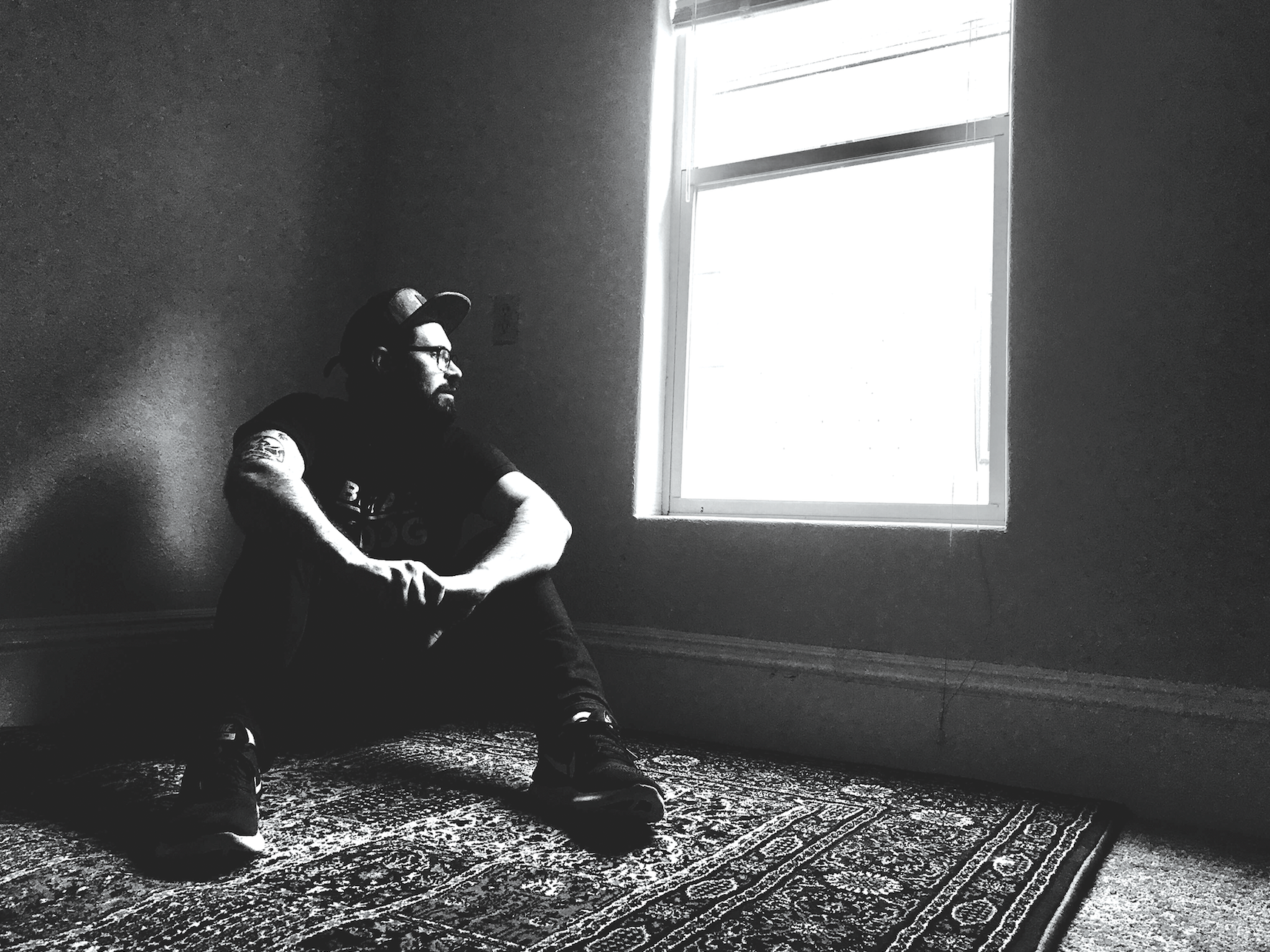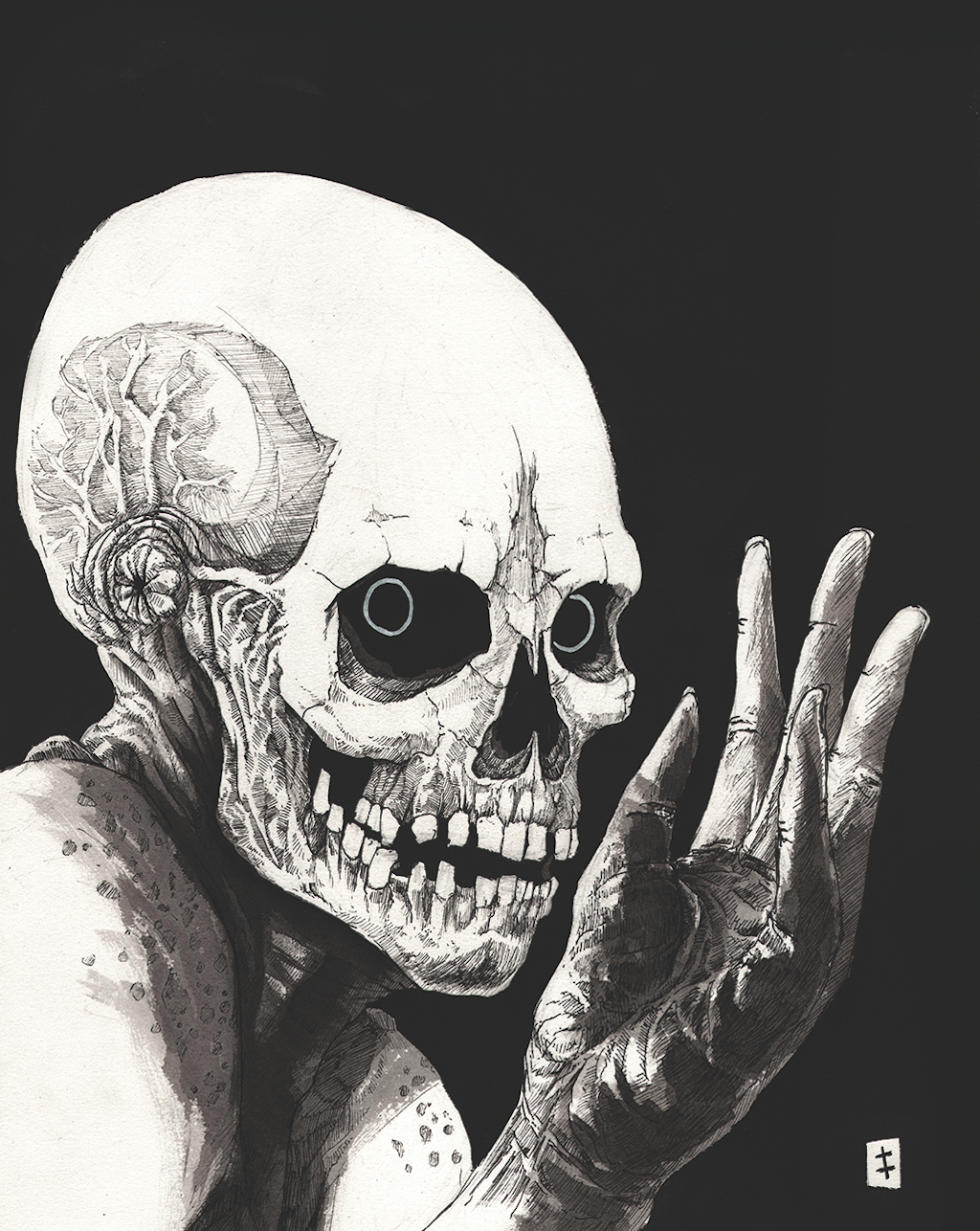Portland Artist Maddison Bond


Across disciplines, modes and styles, there is a special relationship between artists and their expression. Portland artist Maddison Bond utilizes his artistic expression as a therapeutic force for his own anxieties and darkest emotions. Bond’s ability to draw out a gruesome figure allows him to identify his own inner demons and overcome his fears. This December, you can see some of his latest work at Blackbird Pizza or at the Big 500 art show at the Ford Building.
Eleven: What were your earlier experiences with art?
Maddison Bond: I always loved drawing growing up, especially drawing spooky haunted houses and traps. I liked to draw things, but I was really bad at it at first. When I was 14, I made friends with my high school art teacher’s son and he really taught me some technique, and from there it became more of a hobby. Later on, I felt like it even became something I had to do. It was so meaningful to me that I ended up dropping out of college to go to art school. Every time I’ve tried to not make art, it never ends well. Art functions as a really nice type of release and therapy for me. As I became more of a proficient artist I made drawings for blogs and then I transitioned to making stuff just for me. I used to try to make art that people were interested in, but then realized I felt better about making art that I was interested in. I feel like a lot of that art is both silly and serious at the same time.
Eleven: In an ideal world, if you could do anything with your art, what would that be?
MB: I remember a book from when I was growing up … I can never remember the title, but the illustrations where slightly off and creepy. It was about a mother and her kid, and it was supposed to be a children’s book, but everything in it was just a little off-putting. It was the first time I realized what fiction was. When I looked at the book, it took me to this weird place that was unfamiliar but somehow also gave me a certain sense of déjà vu. I would love to make that weird type of art that recreates that weird familiarity. I have never been a very confident writer, but would love to have my art accompany stories. I like the idea of there to being a cohesive narrative to pair along with a portrait, for example.
Eleven: Is there a theme or certain narrative that would accompany the images you create now?
MB: I think my biggest theme is fear and the fear of the unknown. Through my art, I feel like I am somehow making that emotion tangible so that it can be processed, and then overcome. This way, I take the nightmares and emotions that I don’t understand, the emotions that I have the most difficulty with, and then I exorcise those … by getting them out on paper. For me, that is usually anxiety, and it manifests itself in ways like being afraid of my own body and being paranoid of what people might think. This is my way of being able to control things that exist that I may not even really be able to control — by making fearsome things tangible. The monsters that I create, while they may be gruesome or horrifying, are a lot less scary than the emotions that people can sometimes experience.

Eleven: Is that why some of your imagery is on the darker side?
MB: I had a teacher when I was 16 who asked me why I drew everyone as if they were a corpse or dead and scary. She asked me if I wanted people to be afraid of me, or if I was afraid. At the time I kind of just shrugged it off like a teenager, but when I’ve tried making more aesthetically beautiful paintings and using soft imagery, it never ended up feeling true to me. I guess there wasn’t enough of a jagged edge to it or something. This type of aesthetic is my style of communication.
Eleven: Would you say that is the type of art you are also interested in seeing by other artists?
MB: I like figurative things. I feel like all of my work is very figurative, even if it is fantastical. I like really rough, brutal stuff that is kind of similar to what I do, but I also really like refined things. I am also attracted to really technical work that I see in some artists’ styles. Then, there are other styles, like the spray painter [Michael] Reeder, that make more pattern-based figurative work that is more colorful and beautiful. I also really like the artwork of [Jonathan] Wayshak, who more similarly to me, does these really textural, black and white style images with a lot of hatching. I also go with a lot of religious motifs. I grew up going to Catholic school and there is a lot of that saint imagery that I use in my figures. A lot of the figures I draw, like in Catholic art, show deaths and melodramatic poses and all of the lament and pain that is represented within those works.
Eleven: Your drawing of “The Elder One” is almost cartoonish. Is it meant to be that way?
MB: He has a lot of the elements of figures I like to make, spooky with elements of horror. He is based on a character from H.P. Lovecraft and he is an amalgamation of all of these scary things, tentacles and faces. It is supposed to be a combination of the different facets of people all kind of shoved into one. To me, monsters are kind of like the re-shuffling of the familiar. You can see a demon and it is a representation of all of these aspects of evil, but how do you take something like being fragile and turn it into a monster? That is what some of these are about. In each piece that I make, I try to represent a facet of the layers of emotions that someone can connect with.
Eleven: How important of a role do you think Instagram and social media plays in the art world?
MB: You can have so many followers on social media or none, and I don’t think it has too much weight on your success as an artist. It is a good way to get your work out to people. The cult of having a lot of followers doesn’t really matter to me a whole lot though. It means that there are people out there that appreciate my work and “like” my photos, but ultimately it really doesn’t guarantee that I will make genuine connections with people in the real world or that my internet fandom will translate to any actual artistic success. I would say knowing that there are people out there who enjoy my work has increased my confidence. Even if I don’t sell my work at shows, it’s comforting to remember that there is also another audience online who is interested in my stuff. I think the internet can be a great tool to be able to reach out to people who may have never otherwise seen my work.

Eleven: What inspires you to stay productive in making art?
MB: I like to mix it up and I have a couple different sizes of stuff that I make and different approaches to keep it interesting. “The Elder One” is 22 x 30 inches and so it’s pretty big and took up a lot of my time and was a lot more technical. The bigger ones are more about patterns and repetitions. Some of the smaller ones are more casual and for fun and take up a lot less time. I think of the smaller, fun pieces as kind of like palate cleansers in a way, and they kind of break up the monotony of the type of work that can go into the larger pieces.
Eleven: Is there anything new you are working on now?
MB: I am working on some smaller works right now and I will have some of my newer works available at the Big 500 show at the Ford Gallery building. This is a really great event featuring many local artists who will be selling their pieces at $40 each in December. It’s just in time for the holiday season and I think it is a really great place to get in some gift ideas.»
– Lucia Ondruskova



